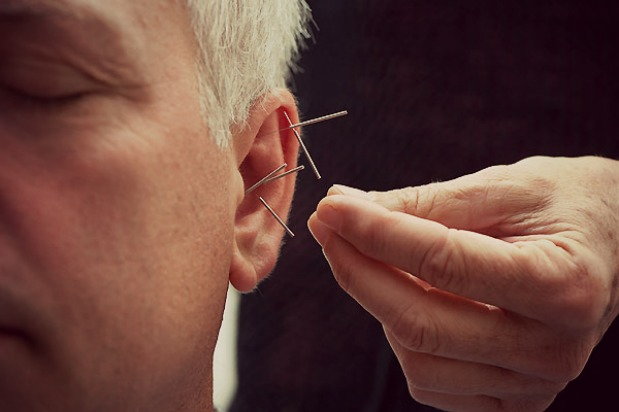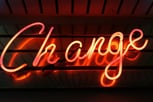According to Traditional Chinese Medicine (TCM), true health is achieved when there is a harmonious balance of yin and yang in the body. As a philosophy, yin and yang are opposing but complementary forces, with yin being the dark side and yang the bright side. This applies to everything in the universe, including our bodies.
In TCM, yin organs include the liver, heart, spleen, lungs, and kidneys and are responsible for producing, transforming, regulating, and storing fundamental substances such as qi (pronounced "chee"), blood, and body fluids. On the other hand, yang organs are responsible for digesting food and transmitting nutrients to the body.
Addiction, then, is a prime example of disharmony as the yin organs are completely depleted and the yang is in sympathetic overdrive. However, unlike Western medicine whose solution is to add prescription drugs to the body (which further depletes the body), TCM seeks to nourish the qi in order to restore equilibrium.
Auricular acupuncture is a type of acupuncture in which thin needles are inserted at specific points on the outer ear. One type of auricular acupuncture known as the National Acupuncture and Detoxification Association (NADA) protocol is especially useful in treating all types of addictions. This practice utilizes a five-point system to calm the symptoms of addiction and and help a person’s body heal from the inside out.
The NADA Protocol for Addiction
Libby Stuyt is a Medical Director and board-certified addiction psychiatrist and has been using the NADA protocol in her program at the Colorado Mental Health Institute since 2000. Funded by the State of Colorado, the 90-day inpatient treatment program is for individuals suffering from severe co-occurring mental illness and substance use and has failed all other levels of treatment.
In other words, some of the most severe cases of substance use disorder in all of Colorado. “NADA is not a standalone treatment but it is a really effective treatment addition tool to helping people quit substance,” Stuyt says.
In all of Stuyt’s research and implementation of NADA in her program, she has seen it significantly improve smoking cessation, anger, concentration (especially for people with ADHD), sleep, pain and energy. But that doesn’t mean there is just one set of outcomes when doing NADA. Stuyt reminds people that acupuncture is a balancing treatment and so it’s essentially the individual body that will make the decision of what exactly it needs. “So if you need to relax and calm down and sleep, it will do that for you,” she says. “If you need energy, it’ll do that for you too.”
Acupuncture and Trauma
Another major issue that she has seen NADA play a major part in is dealing with trauma. As Stuyt firmly believes that “addiction is a trauma-based illness,” this is significant. “We do the ASIS score, the adverse childhood experience score, and our patients invariably are 7, 8, 9 on a scale of 0 to 10,” she says. “They have had a horrible life growing up, horrible experiences, horrible trauma. They have learned that drugs make them feel better. They don’t have to think about what happened to them and they’re totally numb. And so I think this is why the NADA protocol is helpful.”
A prime example of the significant effects of NADA on trauma is best exemplified in real-life disaster situations, one of which was 9/11. The ER closest to Ground Zero were treating first responders who were completely traumatized and so a nurse who worked in the Addictions program set up a room and started giving ear acupuncture treatments in the hospital. Her team treated about 100 people in a day and it was so effective that the Red Cross paid for it to be continued until 2007. Four years later, the same thing happened in Katrina, and the NADA protocol once again proved very helpful.
Acupuncture and Borderline Personality Disorder
Perhaps the most astounding discovery in all of Stuyt’s research has been the effect of NADA on one of the most hardest population to work with in the addiction field: the Borderline Personality Disorder population. “These are people that have gone through so much trauma growing up—they have been abused, neglected, abandoned, their life has been chaos—that all they know is chaos,” she says. “And so they will create chaos to feel normal.” That is why those suffering from BPD are known to drop out of treatment significantly.
Stuyt really believes that NADA is the treatment of choice for this population. In her program, people with BPD use the NADA protocol more than anybody and really benefit from it. “This is the first time ever in their life they’ve sat still and appreciated that they could sit still and be present and mindful,” she says. “And this allows them to actually figure out, ‘Okay, this could be normal.’ And then they’re more willing to learn the skills that help them continue to be that way.”
Currently, NADA is still developing and working on a full directory of referrals. If you’d like to get in touch with a NADA practitioner in your area, call (888) 765-NADA or email [email protected]today for assistance.
If you or someone you know is seeking help with addiction, please visit our directory of treatment centers or call 866-606-0182 to start the path to recovery today.








